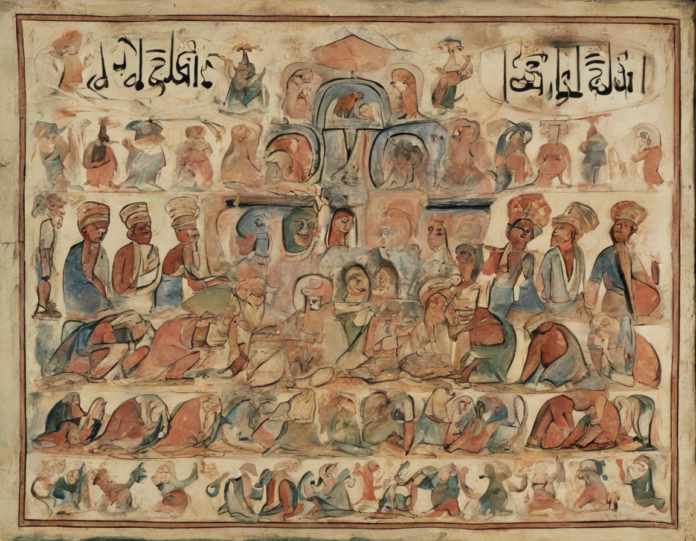Introduction
Understanding the concept of Bado Badi involves delving into a traditional cultural practice rooted in the tribal communities of India, particularly in the states of Odisha and Jharkhand. This practice, which holds immense cultural significance, revolves around the recruitment of young girls to become part of the village council and contribute to decision-making processes. In this article, we will explore the intricacies of Bado Badi, its historical context, its impact on gender dynamics, and its relevance in contemporary society.
Historical Background
The term Bado Badi originates from the local dialects spoken in the tribal regions where this practice is prevalent. Historically, this system was established to ensure the representation of women in village governance and decision-making processes. It was a way to empower women and provide them with a platform to voice their opinions on community matters.
The Structure of Bado Badi
Bado Badi is structured around a council of young girls selected from the village. These girls, usually in their early teens, are chosen based on certain criteria such as their family background, personal qualities, and willingness to participate in the council. Once selected, they undergo training to understand the responsibilities that come with their position.
The Bado Badi council typically meets regularly to discuss various issues affecting the village, ranging from social problems to development projects. The girls are encouraged to express their opinions and contribute ideas to find solutions to these issues. Through this process, they not only learn about governance but also develop leadership skills and confidence.
Impact on Gender Dynamics
One of the key aspects of Bado Badi is its impact on gender dynamics within the community. By giving young girls a platform to participate in decision-making, Bado Badi challenges traditional gender roles and stereotypes. It empowers girls to assert themselves, gain respect within the community, and become leaders in their own right.
Furthermore, Bado Badi helps in breaking the cycle of gender inequality by promoting the education and empowerment of young girls. It sets an example for other community members, showcasing the importance of gender equality and female representation in governance.
Challenges and Controversies
Despite its noble intentions, Bado Badi faces several challenges and controversies. Critics argue that the practice may not always be inclusive or democratic, as the selection process can be influenced by factors like caste, class, or family connections. There are also concerns about the age of the girls involved, as they may be too young to fully comprehend the complexities of governance.
Additionally, the traditional nature of Bado Badi may clash with modern systems of governance and democracy. Some argue that it reinforces hierarchical structures and hinders progress towards more inclusive and equitable forms of decision-making.
Relevance in Contemporary Society
In today’s rapidly changing world, the relevance of Bado Badi is a subject of much debate. While some advocate for its preservation as a cultural heritage that promotes gender equality and community participation, others suggest adapting it to suit modern realities and ensure its sustainability.
One way to address these concerns is to integrate Bado Badi into mainstream governance structures, creating opportunities for young girls to participate in local councils and decision-making processes. This can help bridge the gap between tradition and modernity, ensuring that the principles of Bado Badi are upheld while adapting to the evolving needs of society.
Conclusion
In conclusion, Bado Badi represents a unique cultural practice with the potential to empower young girls and challenge traditional gender norms. While it faces challenges and controversies, its core principles of inclusivity, empowerment, and community participation are laudable. By examining the historical context, structure, impact on gender dynamics, challenges, and relevance in contemporary society, we can gain a deeper understanding of Bado Badi and its significance in the broader discourse on gender equality and governance.
FAQs (Frequently Asked Questions)
- What is the literal translation of Bado Badi?
-
The term “Bado Badi” roughly translates to “big sister” in the local dialects where the practice originates.
-
How are girls selected for the Bado Badi council?
-
Girls are selected based on criteria such as family background, personal qualities, and willingness to participate in village governance.
-
What is the role of the Bado Badi council in decision-making?
-
The council of young girls discusses various village issues and contributes ideas to find solutions, aiming to empower girls and promote gender equality.
-
What challenges does Bado Badi face in modern society?
-
Challenges include inclusivity in the selection process, age considerations of the girls involved, and adapting to modern forms of governance.
-
How can Bado Badi be adapted to suit contemporary needs?
- One suggestion is to integrate Bado Badi into mainstream governance structures, allowing young girls to participate in local councils alongside traditional practices.


